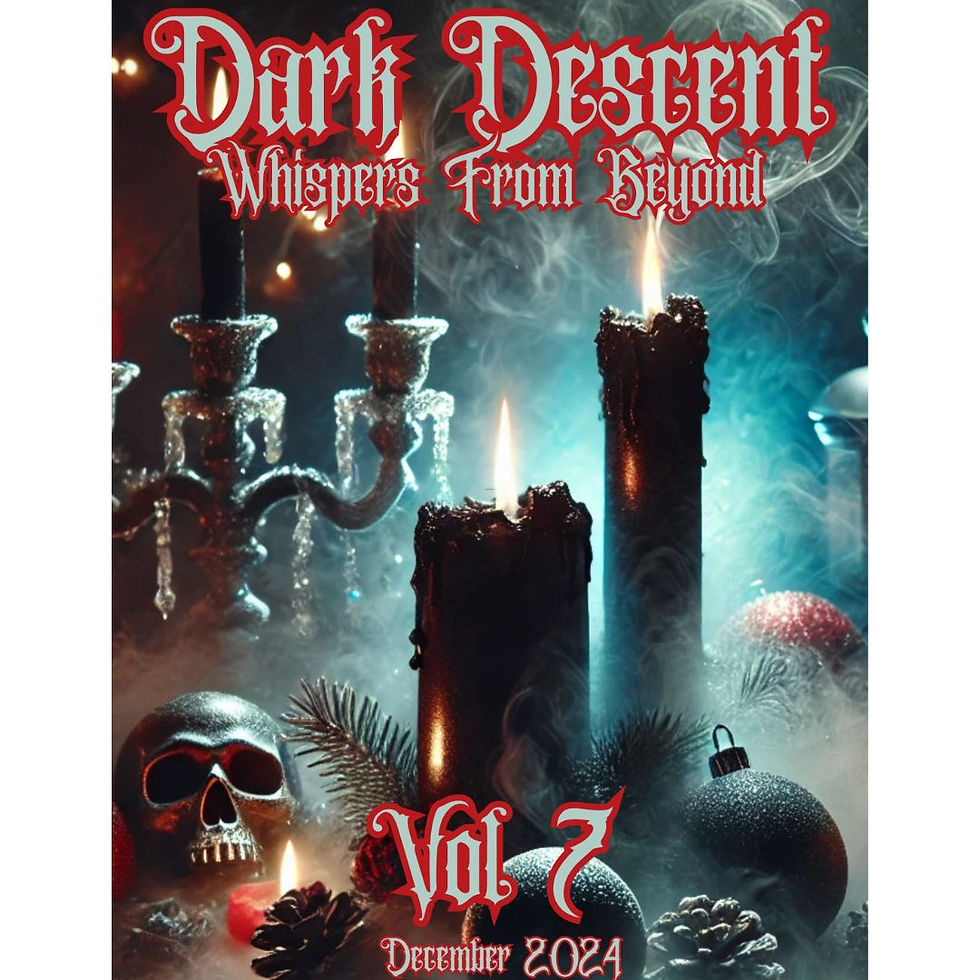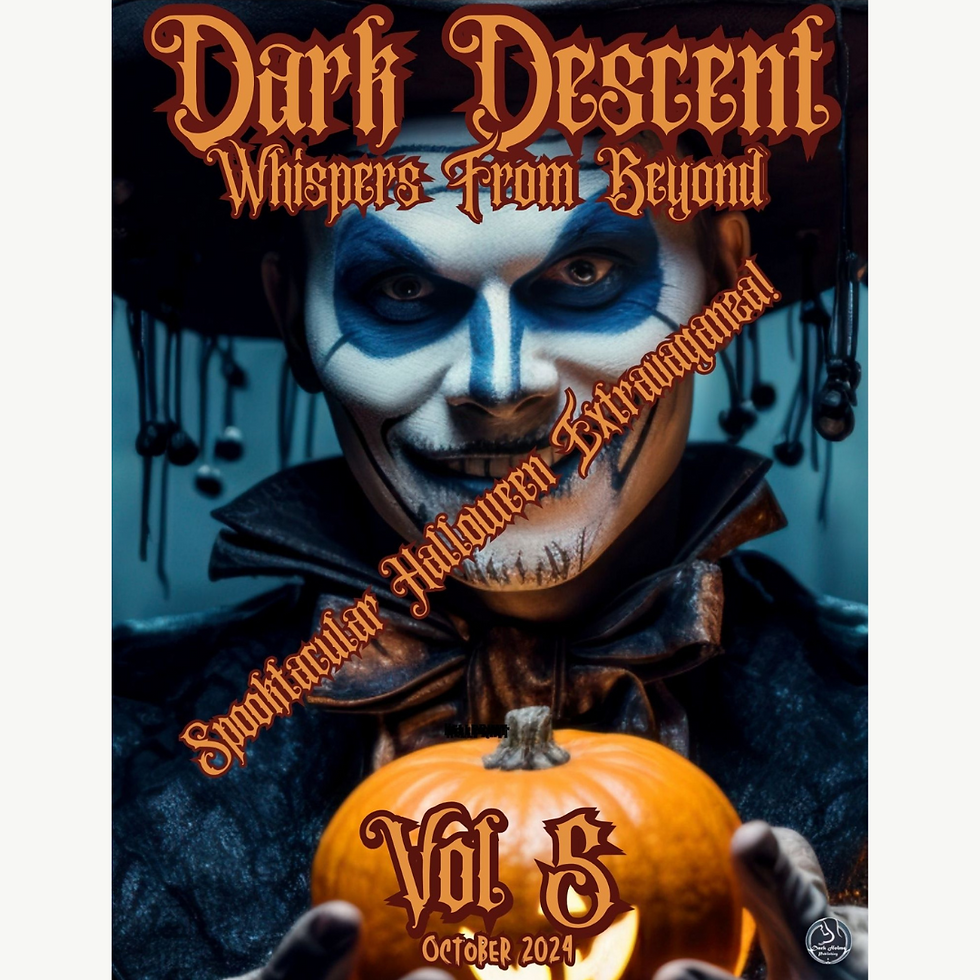How to Successfully Submit Your Horror Stories
- darkholmepublishing

- Sep 22
- 4 min read
Writing horror is a thrilling journey. You craft shadows, breathe life into nightmares, and invite readers to walk the thin line between fear and fascination. But once your story is ready, how do you get it out there? How do you ensure your dark tale finds a home where it will be appreciated? This guide will walk you through the essential steps to successfully submit your horror stories and increase your chances of publication.
Navigating the Publishing Horror Stories Guide: Where to Begin?
The first step is understanding the landscape. Horror fiction is a vast, varied world. From gothic chills to cosmic dread, from psychological terror to grotesque monsters, the genre offers endless possibilities. But publishers and anthologies often have specific tastes and guidelines.
Start by researching where your story fits best. Look for publishers who embrace the weird, the unruly, and the unconventional. Dark Holme Publishing, for example, specialises in horror stories that push boundaries and defy norms. They want stories that linger in the mind long after the last page is turned.
Before you submit, read the submission guidelines carefully. These are not mere formalities. They tell you what the publisher expects in terms of word count, formatting, themes, and even tone. Ignoring these can mean instant rejection.
Use standard manuscript format: double-spaced, 12-point serif font (like Times New Roman), and clear margins.
Include a cover letter that is brief but professional.
Follow word count limits strictly.
Avoid attachments unless requested; paste your story into the body of the email or submission form.

Crafting Your Submission: The Art of Standing Out
Your story must grip the editor from the first sentence. Horror thrives on atmosphere, tension, and surprise. But when submitting, clarity and professionalism are just as important as creativity.
Polish your story until every word counts. Cut unnecessary descriptions. Make your scares sharp and your pacing tight. Editors receive hundreds of submissions. They want stories that are easy to read and hard to forget.
Write a compelling cover letter. This is your chance to introduce yourself and your story. Keep it short and to the point. Mention any relevant publishing credits or awards, but don’t overdo it. Express enthusiasm for the publisher’s mission and how your story fits their catalogue.
Proofread meticulously. Typos and grammatical errors can kill your chances. Use tools like Grammarly or ask a trusted friend to review your work.
When you’re ready, you can submit short horror stories to publishers like Dark Holme. Their submission page is clear and straightforward, making the process less daunting.

What are the odds of getting a short story published?
Let’s be honest. The odds can feel slim. Many writers face rejection before their work finds a home. But understanding the process helps you stay motivated.
Competition is fierce. Anthologies and magazines often receive hundreds of submissions for just a handful of slots.
Quality matters most. A well-crafted, original story stands out.
Persistence pays off. Rejection is not failure. It’s part of the journey.
Editors look for stories that resonate with their audience and fit their publication’s style. Sometimes, it’s about timing and luck as much as talent.
To improve your chances:
Submit widely but wisely. Target publishers who align with your style.
Follow guidelines exactly. This shows professionalism.
Keep improving your craft. Attend workshops, read widely, and write regularly.
Build relationships. Engage with the horror writing community online and at events.
Remember, every published story started as a submission that someone took a chance on.

Handling Rejection and Feedback: Turning No into Yes
Rejection stings. It’s personal. But it’s also inevitable. Every writer faces it. The key is how you respond.
Don’t take it personally. Editors reject stories for many reasons, often unrelated to quality. Maybe your story didn’t fit their current theme or they already accepted something similar.
Learn from feedback. If you receive notes, consider them carefully. They can be invaluable for growth.
Keep submitting. Each submission is a step closer to success. Keep a log of where you’ve sent your stories and the responses you get.
Celebrate small wins. Even a personalised rejection means your story was read. That’s progress.
Building a Portfolio and Community: Your Horror Writing Future
Publishing one story is just the beginning. To thrive, build a portfolio of published work. This opens doors to bigger opportunities like novels, collaborations, and speaking engagements.
Engage with the horror community. Join forums, attend conventions, and participate in writing groups. Sharing your experiences and learning from others fuels creativity and motivation.
Stay true to your voice. Dark Holme Publishing and similar presses want stories that are bold and unique. Don’t dilute your style to fit trends.
Keep writing. The more you write, the better you get. And the more stories you have to submit.
Publishing horror stories is a journey of passion, patience, and persistence. With the right approach, your dark tales can find the audience they deserve.
Ready to take the plunge? Visit Dark Holme Publishing’s submission guidelines and start your journey to publication today. Your next nightmare might just be their next bestseller.
.png)

1.png)












































Comments